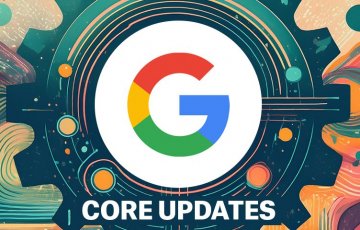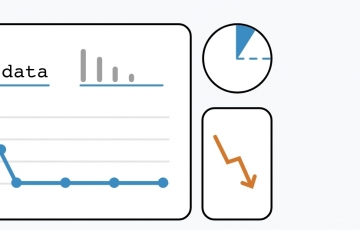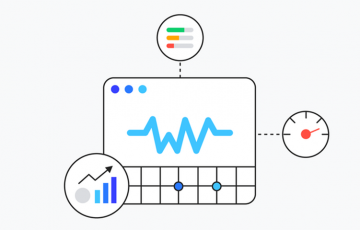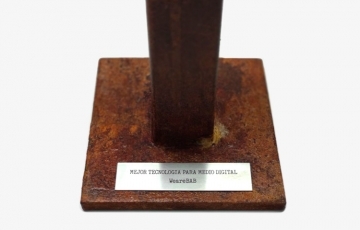Hierarchy and organization of content on your website
Learn how to improve Google qualitative metrics

Organization and hierarchy
Hello! What's going on?
Now that January is behind us, it is time to review how the good New Year's resolutions you made for your media are evolving: improve the user experience, facilitate the search for content, reduce the bounce rate, increase retention and improve the time spent by users.
In short, organize the contents as a way to facilitate and improve access to the information of your editorial project, thus improving the understanding of your media by users and search engines.
If it's good for the user, it's good for Google and of course for your project. Win-Win-Win
Helping users to find what they are looking for in a simple and comfortable way seems easy, but it is a task that requires study and previous work to facilitate understanding and reduce the bounce rate.
It is the same thing you do when you enter a store in real life and once inside, if you do not find what you are looking for at first glance you leave immediately, with the frustration that you have made a mistake. Perhaps simply because of poorly structured information or perhaps a saturation of content in a small space you have not achieved your goals.
All this is exactly what you have to avoid happening in the different URLs of your project, to reduce the number of bounces in your project, that is to say, the rate of abandonment of the page. Keep in mind that this is a metric that Google penalizes quite a lot.
Keep in mind that if Google detects that a search result you have promoted in the first positions of the SERPs (Search Engine Results Pages) has a high bounce rate, it will automatically cause it to lose positions. If you think about it, it makes sense, users are telling Google that this content is not what they wanted to consume and therefore does not deserve to be in the top positions.
As we mentioned in the previous post, the information architecture of your project is a key factor for users to understand in a comfortable and intuitive way how your website is organized. It is necessary to properly use categories, subcategories and tags to help create a linear navigation and a horizontal distribution of your content. Everything at sight, with clear and logical nomenclatures, consistent with the line of your digital media and its subject matter.
How to create the right hierarchy
In principle, there is no irrefutable axiom, the main way to do it, as always, is with common sense and always thinking first of the user. It is also good to think about the subject matter and type of project. A communication media is not the same as an informative portal or an e-commerce.
Organize the topics in a logical way and make the user feel comfortable. Always respect the most important premise in web usability: do not make the user think with the most basic things. Everything has to be easy and within reach, following established standards and with layers of information ordered by levels. So will the sitemap, which is the file with which your web project gives indexing indications to Google robots. Follow the established rules, create a good flow and a diagram, do not alter the logic and everything will be fine.
We have to distinguish between visual hierarchies and link hierarchies, so that the user feels guided throughout the navigation of your project, increasing the recirculation between content and this increases the number of page views and improving the time spent on your medium. If you improve their user experience, all of Google's qualitative metrics improve, as well as the number of advertising impressions of your website's ad inventory.
Visual hierarchy
In this aspect there is a structure and a visual and hierarchical organization established. It serves both to guide users through the contents, as well as robots to know exactly what is the relevance of each of them. Always in descending sense of reading and by importance in the visual structure within the page.
The consistency of the hierarchy is based on the use of typography with different sizes and weights, in order to highlight the headlines from the rest of the texts in the body of the news. They are the main points of attention and always have to be labeled with h1, they are the first that the user will read and also the search robots, so if you define them consistently in the meta-title of the page and add a good density of keywords, you will be doing great.
Below, we have the subtitles, which to be sufficiently visible have to be labeled with h2, but visually they should not compete with the headlines or with the rest of the content of the body of the page. Finally, the intertitles in the middle of the body content must be labeled with h3, which is the third typographic hierarchy that must coexist on a page.
Now you know how a user and a Google robot read when indexing content, in descending order of relevance and as indicated by the h1, h2 and h3 tags.
Remember that there can only be one h1 per page and where you do not reach with h1, h2 and h3 to create a hierarchy and a visual order, you can use bold and Google will understand that you indicate that the content is relevant. In any case, do not make unjustified use, because long chains of bold with unimportant texts, apart from being visually unattractive, complicate the reading and dirty the page without providing value to the user. Remember, if we generate value to the user, we generate value to Google.
Use the right and necessary keywords. To avoid repeating yourself, use synonyms to reinforce the meta-title and the h1 and h2, and help create a consistent structure for users and robots. Finally, if you have to include a lot of information on a page, you can make optional use of lists with the main ideas that allow the user to get a clear idea of all the content at a glance. Using paragraphs and highlights at the end of each block, with summaries of the main concepts or arguments of the information in the body of the text, also helps the understanding of the content, especially if it's a bit long. Remember that both for SEO and for communicating an idea, less is more.
Whenever you can, generate rich media content: video, audio, image galleries... it will increase the time spent and retention of users on the pages that include them.
Another determining factor for users to stay as long as possible in your media, is to create a good structure of internal links between contents, to flow with a good recirculation between them and generate a good Link Juice.
This is a way to transfer authority to different URLs of your project, thanks to the inclusion of internal links using the "dofollow" tags that as its name suggests, are to signal to Google that these links have to be crawled for their relevance, just as you will do to indicate the opposite with the "nofollow" tag, when you want them not to be transmitted SEO weight, because they are not interesting enough, or are inconsequential or because you do not want to dilute the authority of certain content. For example, the link to the Legal Notice text.
You should keep in mind that the more internal links you have from one content to another, the more you dilute its authority. The analogy of juice is used, because if you make a pile of glasses and spill juice, the ones at the top are more or less full, but as it goes down the glasses underneath practically receive nothing.
You have to find a balance between "dofollow" (which are all by default, unless otherwise indicated) and "nofollow". Each "dofollow" dilutes the authority of the page and consequently the Link Juice. Whenever you can, create internal links with "dofollow" attribute to other internal contents and you will reinforce their authority. You can do the same with external links, do not be afraid to include quality external links labeled with "dofollow", if you think they add value to the user, Google will take it into account even if you are transmitting SEO weight to this link outside your website. Don't be selfish, be fair and consistent and Google will be fair and consistent with your project. Quid pro quo.
As you know, everything in this life has to be justified or in the long run it becomes counterproductive practices, because an indiscriminate and excessive use of internal links, dilutes the authority of the contents in the eyes of Google and they are postponed to the oblivion of its search engine.
Improvisation does not work in SEO and if your digital media needs to improve the positioning of the contents, do not hesitate to contact us and request information about our SEO services.
Request information about SEO services
If you liked the content, you can share this post on social networks and 1 like will also encourage us to continue... it's free and you know that the best things in life always are.... ?
If you want to suggest a topic that adds value to the day to day of your editorial project you can do it here and if you want to subscribe to our newsletter, just leave a name and an email in the field below, and you will receive the news of our blog before anyone else.
We will continue talking about what we like the most. Will you be there?
See you soon!
And finally, did you know that...
In the next post we will talk about the importance and advantages of making an automated and scheduled publication of your content in different social networks. How they improve the quantitative metrics of Google and how they drive traffic to your media, improve the level of conversions and increase the loyalty of users with your project. We will talk about all of this...





